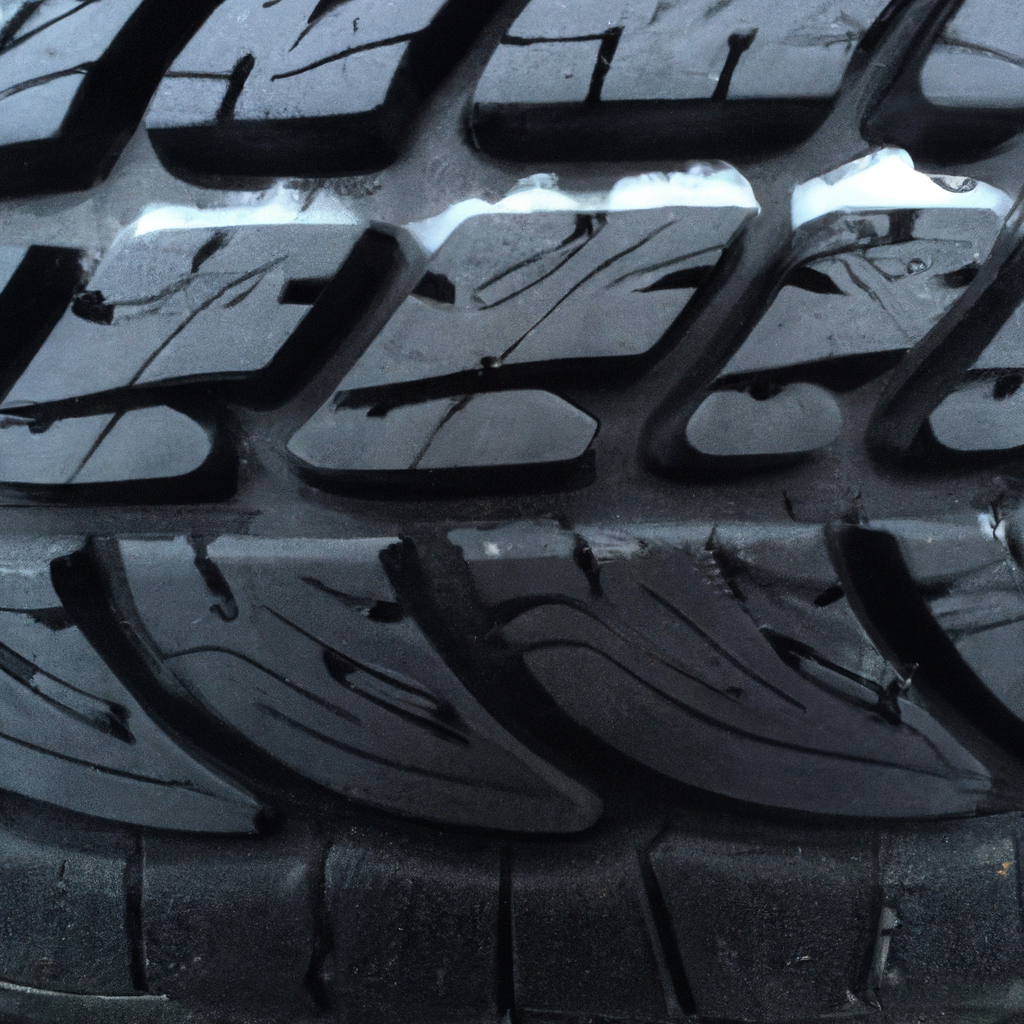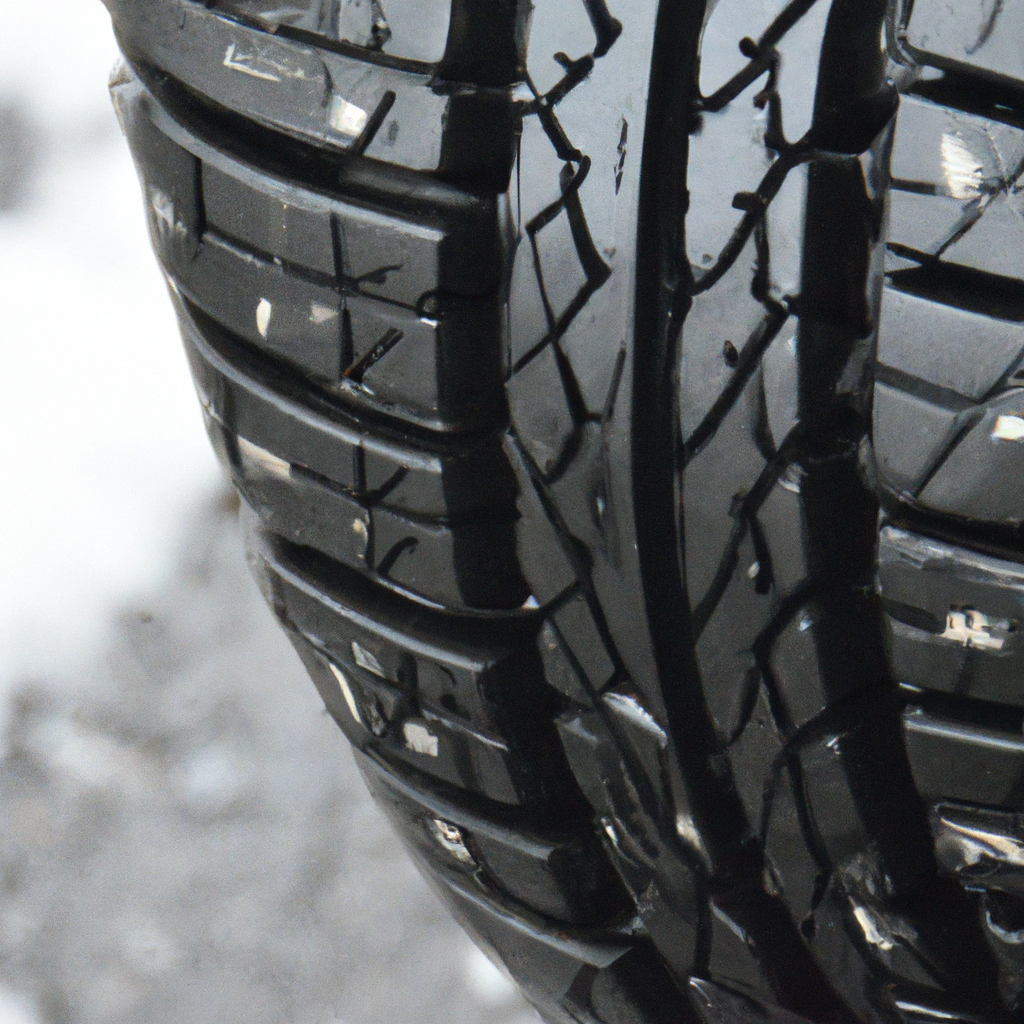Imagine driving down a wet and slushy road during the winter months, and the last thing you want to worry about is the traction of your tires. That’s where winter tires come in! Designed specifically for cold, icy, and snowy conditions, winter tires provide excellent grip and control on slippery surfaces. But how do they perform on wet and slushy roads? In this article, we’ll explore the capabilities of winter tires on these challenging conditions, helping you drive with confidence even in the harshest winter weather.

Factors that affect winter tire performance
Winter tire performance is influenced by various factors that can have a significant impact on your driving experience during the colder months. Understanding these factors is essential for selecting the right winter tires and ensuring your safety on wet and slushy roads. Let’s explore the key factors that affect winter tire performance.
Tire tread design
The tread design of winter tires plays a crucial role in their performance on wet and slushy roads. Several aspects of tire tread design can influence how well the tires grip the road surface and disperse water and slush.
Groove patterns for water and slush evacuation
Winter tires are equipped with deep and wide grooves to effectively channel water and slush away from the tire’s contact patch. These grooves prevent hydroplaning by allowing the tire to maintain contact with the road surface. The number, size, and orientation of these grooves vary between tire models and can impact the tire’s overall wet and slush performance.
Sipes for improved grip
Sipes are small slits or cuts in the tread blocks of winter tires. These sipes help enhance the tire’s grip on wet and slushy surfaces by providing additional biting edges. When the tire encounters water or slush, the sipes interlock with the road surface, allowing for better traction and improved handling.
Block shapes for traction
The shape and arrangement of the tread blocks on winter tires play a significant role in their traction capabilities. Tread blocks with sharp edges and aggressive patterns can provide better grip on wet and slushy roads. The block shapes are designed to bite into the road surface, improving traction and keeping your vehicle under control.
Studded vs. studless tires
Winter tires are available in two main types: studded and studless. Studded tires feature metal studs embedded in the tread pattern, providing exceptional traction on icy surfaces. However, they may have reduced performance on wet or dry roads. Studless winter tires, on the other hand, rely on advanced tread designs and compounds to maximize grip on all types of winter surfaces, including wet and slushy roads.
Tire compound and its influence
The compound, or the type of rubber used in winter tires, also plays a significant role in their performance on wet and slushy roads.
Soft rubber for better grip
Winter tires are typically made from a softer rubber compound than all-season tires. The softer rubber remains flexible at colder temperatures, allowing the tires to maintain optimal grip on wet and slushy surfaces. This improved grip helps ensure better control and shorter braking distances, enhancing overall safety in winter driving conditions.
Silica and other additives for enhanced wet traction
To further enhance wet traction, winter tire compounds often contain additives like silica. Silica improves the tire’s ability to grip the road surface, especially in wet conditions. This compound modification helps prevent skidding and increases overall stability and control.
Winter tire compounds vs. all-season tires
While all-season tires are designed to provide reasonable performance in various weather conditions, they may not be as effective as winter tires on wet and slushy roads. Winter tire compounds are specifically formulated to offer superior grip and handling in cold, snowy, and wet environments. When driving on wet or slushy roads, the use of winter tires provides an extra layer of safety compared to relying solely on all-season tires.
Effect of tire width and pressure
The width and pressure of your winter tires can significantly impact their performance on wet and slushy roads. Understanding these factors can help you optimize your driving experience during the winter season.
Narrower tires for improved hydroplaning resistance
Narrower winter tires can be beneficial on wet and slushy roads due to their ability to cut through the standing water and slush more effectively. Wider tires may float on the surface, increasing the risk of hydroplaning. The narrower tire’s smaller contact patch allows for better displacement of water and slush, ensuring improved traction and reducing the chances of losing control.
Optimal tire pressure for better contact with the road
Maintaining the correct tire pressure is crucial for maximizing the performance of your winter tires on wet and slushy roads. Overinflated tires reduce the tire’s contact area with the road, resulting in decreased traction. Underinflated tires, on the other hand, can lead to poor handling and reduced braking performance. Regularly checking and maintaining the recommended tire pressure can help ensure optimal contact between the tire and the road, enhancing grip and responsiveness.
Trade-off between stability and grip
It’s important to note that for wet and slushy road conditions, there is a trade-off between stability and grip when it comes to tire width. While narrower tires offer improved resistance to hydroplaning, wider tires may provide better stability and handling on dry roads or in deeper snow. It’s essential to strike a balance based on the prevalent winter conditions in your area and your driving preferences.

Impact of road temperature
The temperature of the road surface has a significant impact on the performance of winter tires. Understanding how winter tires behave in different temperature ranges is essential for making informed decisions regarding your tire selection.
Winter tire performance in different temperature ranges
Winter tires are specifically designed to perform well in cold temperatures, typically below 45°F (7°C). As the temperature drops, the rubber compound of winter tires remains pliable, allowing for excellent traction. However, in warmer temperatures, winter tire compounds may become too soft, leading to increased tire wear and reduced performance. It is important to switch back to all-season or summer tires once the temperatures rise consistently above freezing.
Rubber hardening at low temperatures
One crucial consideration when it comes to winter tire performance is the phenomenon of rubber hardening at low temperatures. As the temperature drops, the rubber compounds in all tires, including winter tires, can become stiffer and less grippy. However, winter tire compounds are specifically formulated to remain softer at lower temperatures, counteracting the negative effects of rubber hardening and ensuring reliable grip and traction on wet and slushy roads.
Specially engineered compounds for extreme cold
For areas with extremely cold temperatures or icy conditions, some winter tires may feature special compounds or technologies to enhance their performance. These tires are engineered to provide superior grip and handling even in the harshest winter conditions, minimizing the risks associated with driving on wet and slushy roads. If you live in an area with severe winter weather, it’s worth considering winter tires with enhanced cold-weather performance.
Road surface conditions and their significance
The condition of the road surface is another crucial factor affecting winter tire performance on wet and slushy roads. Different surface conditions present distinct challenges that your winter tires must be able to handle effectively.
Effect of wet roads on traction
Wet roads pose a significant challenge for tire traction, especially in combination with cold temperatures. The water on the road surface can reduce the tire’s grip, making it easier for the tires to lose traction. Winter tires with appropriate tread design and compound properties help disperse water, maintain grip, and prevent skidding, ensuring safer driving on wet roads.
Importance of slushy road performance
Slush, a mixture of water and snow, can create particularly tricky road conditions for drivers. It can accumulate between the tire and the road, affecting traction and handling. Winter tires with specialized tread patterns and siping provide improved slush evacuation, minimizing the buildup and allowing for enhanced grip and stability. The ability to navigate slushy roads with confidence is essential for safe and comfortable winter driving.
Snow vs. slush vs. ice
Winter driving conditions can vary, ranging from snow-covered roads to slushy surfaces and icy patches. Each type of surface poses unique challenges for tire performance. Winter tires are designed to excel in all these conditions. The tread patterns, rubber compounds, and specialized features of winter tires ensure optimal grip, maneuverability, and control, whether you encounter snow, slush, or ice.

Tire grip and hydroplaning
The grip of your winter tires and the risk of hydroplaning on wet roads are closely related. The tread design and tire pressure play significant roles in determining how well your tires can handle water accumulation.
Improved drainage with tread grooves
The grooves in winter tire treads are specifically designed to channel water away from the tire’s contact patch, preventing hydroplaning. These grooves act as drainage channels, directing water outwards and ensuring that the tire maintains contact with the road surface. The depth and spacing of the grooves are optimized to handle varying water volumes, maximizing grip and minimizing the risks of hydroplaning.
Sipes and their role in water dispersion
Sipes, the small cuts or slits in the tire’s tread blocks, have an essential role in water dispersion. As the tire rotates, the sipes help evacuate water from the contact patch, allowing for better traction. The interlocking action of the sipes with the road surface helps ensure that the tire maintains optimal grip, even on wet roads. The presence of sipes enhances the tire’s ability to dispel water and resist hydroplaning.
Tire pressure and hydroplaning risk
Maintaining the recommended tire pressure is essential for reducing the risk of hydroplaning on wet roads. Adequate tire pressure ensures that the tire’s contact patch remains maximized, promoting optimal grip. Overinflated tires reduce the contact area, increasing the chances of hydroplaning. Conversely, underinflated tires compromise handling and responsiveness, potentially leading to hydroplaning. Regularly checking and adjusting tire pressure is crucial for mitigating the risks associated with wet road conditions.
Traction in wet and slushy conditions
The ability of winter tires to maintain traction on wet and slushy surfaces is critical for safe and confident driving during the winter season. Several factors influence their performance in these conditions.
Wet road grip compared to dry roads
Winter tires are designed to excel in wet conditions, providing better grip compared to all-season or summer tires. The softer rubber compounds and specialized tread designs help the tires maintain optimal contact with the road surface, even when it’s wet. The improved wet road grip ensures better traction, reduced braking distances, and increased overall safety.
Tire tread contact patches and adhesion
The contact patch of the tire, the area of the tread that makes contact with the road, plays a crucial role in traction. The tread design, including the grooves, sipes, and block shapes, maximizes the contact patch on wet and slushy roads. The larger the contact patch, the more surface area there is for the tire to grip the road, allowing for improved adhesion and enhanced traction.
Slush performance and maintaining traction
Slushy road conditions can be particularly challenging, as the mixture of water and snow can reduce traction and stability. Winter tires with specialized tread patterns excel in slush performance by effectively evacuating slush from the tread grooves, allowing for continued contact between the tire and the road. The ability of winter tires to maintain traction in slushy conditions is crucial for safe and predictable handling.

Winter tire braking capabilities
Winter tire performance in wet and slushy conditions is closely tied to their braking capabilities. Effective braking is essential for maintaining control and avoiding potential accidents.
Effectiveness in wet road braking
Winter tires are specifically designed to enhance braking performance on wet roads. The specialized compound, along with the tread design, allows the tires to maintain traction and effectively disperse water, reducing the risk of skidding or sliding. By providing shorter braking distances, winter tires help ensure enhanced safety in wet road conditions.
Factors influencing braking distances
Several factors can influence the braking distances of winter tires in wet and slushy conditions. The tread design, including the depth and spacing of the grooves and the presence of sipes, affects the tire’s ability to evacuate water and maintain grip during braking. The tire compound’s grip on wet surfaces also plays a significant role in determining braking distances. Keeping your tires properly maintained and selecting winter tires optimized for wet and slushy conditions can help minimize braking distances and enhance overall safety.
Slush and its impact on stopping
Slushy road conditions pose unique challenges when it comes to braking. The presence of slush between the tires and the road can affect the tires’ ability to stop the vehicle quickly. Winter tires with specialized features for slush evacuation can help maintain optimal braking performance, allowing for safer and more controlled stops. It’s important to drive with caution and adjust your braking distance when encountering slush on the road.
Safety considerations and recommendations
Ensuring your safety on wet and slushy roads during the winter season requires careful consideration of different factors. Here are some safety considerations and recommendations to help you make informed decisions.
Choosing the right winter tires for wet conditions
When selecting winter tires, prioritize those with tread patterns optimized for wet and slushy conditions. Look for tires with deep grooves, sipes, and specialized features designed to enhance wet performance. Consider the road conditions prevalent in your area and choose tires that provide the appropriate level of grip and traction for your needs. Consulting with a tire specialist can also help you make the right choice.
Regular maintenance for optimal performance
Regular maintenance of your winter tires is crucial for ensuring optimal performance on wet and slushy roads. Monitor the tire pressure regularly and adjust it to the recommended levels. Inspect the tread depth to ensure it meets the legal requirements and provides sufficient grip. Additionally, rotate your tires periodically to ensure even wear and maintain their effectiveness throughout the winter season.
Driving techniques for wet and slushy roads
In addition to having the right winter tires, adopting appropriate driving techniques is essential for safe navigation on wet and slushy roads. Reduce your speed and maintain a safe following distance to allow for increased braking distances. Smooth and gradual inputs, including steering, acceleration, and braking, help maintain control and prevent skidding or sliding. Avoid sudden maneuvers that can disrupt the tire’s grip on the road surface, and exercise caution when encountering standing water, slush, or icy patches.
By understanding the factors that affect winter tire performance on wet and slushy roads, you can make informed decisions about tire selection, maintenance, and driving techniques. Prioritizing safety and taking appropriate measures will ensure a safer and more comfortable winter driving experience. Remember, your winter tires are your best ally in conquering the challenges of winter roads, so choose wisely and drive responsibly.


